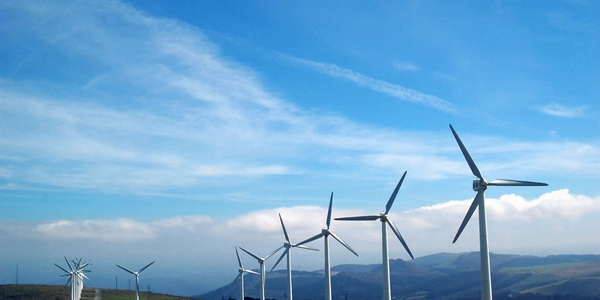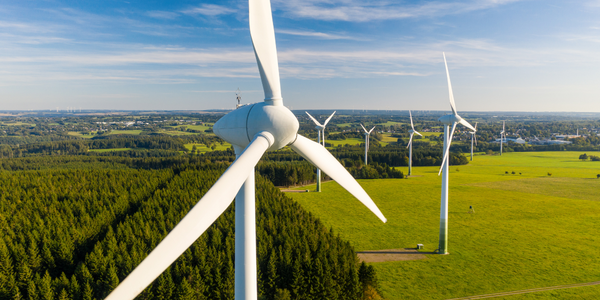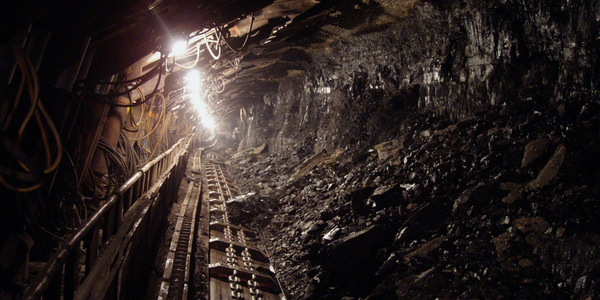Technology Category
- Sensors - Flow Meters
- Sensors - Temperature Sensors
Applicable Industries
- Mining
- Renewable Energy
Applicable Functions
- Facility Management
- Product Research & Development
Use Cases
- Construction Management
- Construction Site Monitoring
Services
- Testing & Certification
About The Customer
Fujian Yongfu Power Engineering Co., Ltd. is a power generation company based in Changle, Fujian, China. As part of China's push to increase the country's production of renewable energy and reduce the use of carbon-emitting fuels, the company is installing numerous wind facilities off the country's coast. Fujian Yongfu is committed to developing innovative solutions to overcome the challenges posed by geographically complex areas and harsh environmental conditions. The company's latest project, the China Changle Offshore Wind Farm Area C, is one of the world's deepest locations for a wind farm and is a testament to their commitment to innovation and environmental sustainability.
The Challenge
Fujian Yongfu Power Engineering was tasked with building a large wind farm in a geographically complex area prone to typhoons, earthquakes, and shifting soil. The location for the wind farm, the China Changle Offshore Wind Farm Area C, is one of the world's deepest locations for a wind farm with an average water depth of between 31 and 45 meters. The company planned to install 62 wind turbines, each with a capacity of 8 megawatts, for a total capacity of 496 megawatts. However, the site's frequent typhoons, unstable soil, and high earthquake risk necessitated the development of particularly strong and stable foundations for each turbine. Traditional methods of offshore wind design proved inadequate, producing expensive designs and failing to accurately simulate the interaction between the soil and a pile with such a large diameter. The company also faced budget constraints, necessitating a cost-effective solution.
The Solution
Fujian Yongfu decided to build the foundations with suction pile frames, a method not previously used for offshore wind turbines. To overcome the limitations of traditional design methods, the company turned to digital design software. They used Bentley's OpenWindPower Fixed Foundation and PLAXIS to create a unified design environment that allowed simultaneous soil analysis and foundation design. PLAXIS was used to perform a full analysis of the soil in the construction area and measure the potential effects of design options. OpenWindPower Fixed Foundation was used to form and optimize the design of the foundation while examining its interaction with the soil. A suction pile module within SACS was used to import PLAXIS analysis and create a composite model, which was then adjusted to increase strength and stability. The result was a three-pile suction conduit frame, a design previously only used in experimental environments within China.
Operational Impact
Quantitative Benefit

Case Study missing?
Start adding your own!
Register with your work email and create a new case study profile for your business.
Related Case Studies.

Case Study
Remote Monitoring & Predictive Maintenance App for a Solar Energy System
The maintenance & tracking of various modules was an overhead for the customer due to the huge labor costs involved. Being an advanced solar solutions provider, they wanted to ensure early detection of issues and provide the best-in-class customer experience. Hence they wanted to automate the whole process.

Case Study
Vestas: Turning Climate into Capital with Big Data
Making wind a reliable source of energy depends greatly on the placement of the wind turbines used to produce electricity. Turbulence is a significant factor as it strains turbine components, making them more likely to fail. Vestas wanted to pinpoint the optimal location for wind turbines to maximize power generation and reduce energy costs.

Case Study
Siemens Wind Power
Wind provides clean, renewable energy. The core concept is simple: wind turbines spin blades to generate power. However, today's systems are anything but simple. Modern wind turbines have blades that sweep a 120 meter circle, cost more than 1 million dollars and generate multiple megawatts of power. Each turbine may include up to 1,000 sensors and actuators – integrating strain gages, bearing monitors and power conditioning technology. The turbine can control blade speed and power generation by altering the blade pitch and power extraction. Controlling the turbine is a sophisticated job requiring many cooperating processors closing high-speed loops and implementing intelligent monitoring and optimization algorithms. But the real challenge is integrating these turbines so that they work together. A wind farm may include hundreds of turbines. They are often installed in difficult-to-access locations at sea. The farm must implement a fundamentally and truly distributed control system. Like all power systems, the goal of the farm is to match generation to load. A farm with hundreds of turbines must optimize that load by balancing the loading and generation across a wide geography. Wind, of course, is dynamic. Almost every picture of a wind farm shows a calm sea and a setting sun. But things get challenging when a storm goes through the wind farm. In a storm, the control system must decide how to take energy out of gusts to generate constant power. It must intelligently balance load across many turbines. And a critical consideration is the loading and potential damage to a half-billion-dollar installed asset. This is no environment for a slow or undependable control system. Reliability and performance are crucial.

Case Study
Remote Monitoring and Control for a Windmill Generator
As concerns over global warming continue to grow, green technologies are becoming increasingly popular. Wind turbine companies provide an excellent alternative to burning fossil fuels by harnessing kinetic energy from the wind and converting it into electricity. A typical wind farm may include over 80 wind turbines so efficient and reliable networks to manage and control these installations are imperative. Each wind turbine includes a generator and a variety of serial components such as a water cooler, high voltage transformer, ultrasonic wind sensors, yaw gear, blade bearing, pitch cylinder, and hub controller. All of these components are controlled by a PLC and communicate with the ground host. Due to the total integration of these devices into an Ethernet network, one of our customers in the wind turbine industry needed a serial-to-Ethernet solution that can operate reliably for years without interruption.

Case Study
Temperature monitoring for vaccine fridges
Dulas wanted a way to improve the reliability of the cold chain, facilitating maintenance and ensuring fewer vaccines are spoiled. Dulas wanted an M2M solution which would enable them to record and report the temperature inside vaccine refrigerators.

Case Study
Underground Mining Safety
The goal was to produce a safety system to monitor and support underground mining operations; existing systems were either too simple (i.e. phone line) or overly complex and expensive, inhibiting deployment, and providing little-to-no support in event of an accident. Given the dangerous nature of the mining work environment and the strict regulations placed on the industry, the solution would have to comply with Mine Safety and Health Administration (MSHA) regulations. Yet the product needed to allow for simple deployment to truly be a groundbreaking solution - increasing miner safety and changing daily operations for the better.



